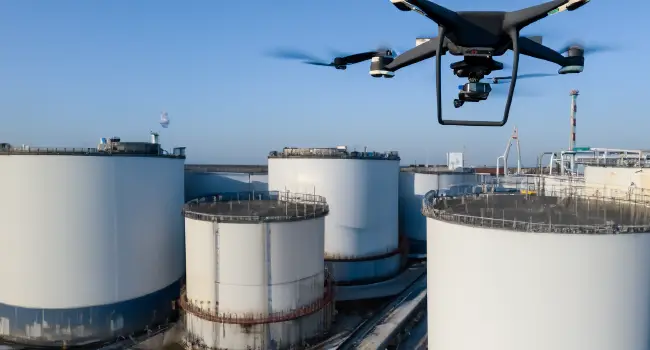Inspection Drones

Over the past few years, drones have become an increasingly popular tool for inspection work. Inspection drones have been widely adopted by various industries for their ability to access hard-to-reach areas, capture high-quality imagery and videos, and perform inspections safely and efficiently. They can also be more cost effective than traditional methods.
Inspection drones are unmanned aerial vehicles equipped with cameras, sensors, and other specialized equipment that enable them to conduct inspections of various structures, including buildings, bridges, power lines, and wind turbines. The use of inspection drones is growing rapidly in industries such as construction, energy, and infrastructure, where they provide significant advantages over traditional inspection methods.
One of the primary benefits of inspection drones is their ability to access difficult-to-reach areas. For example, inspecting a tall building or bridge would typically require specialized equipment, such as scaffolding or cranes, which can be costly and time-consuming to set up. With inspection drones, however, a skilled pilot can fly the drone up to the structure and capture detailed imagery and videos of the structure's condition, without the need for additional equipment or personnel.
Another advantage of inspection drones is their ability to capture high-quality imagery in visible and infrared light, and using LIDAR. Inspection drones are equipped with cameras capable of capturing high-resolution images and videos, which can be used to identify any defects or areas of concern. This allows inspectors to see details that may not be visible from the ground or with the naked eye, such as cracks, corrosion, or other damage.
Inspection drones are also an excellent tool for performing inspections safely and efficiently. Inspections of structures such as wind turbines or power lines can be dangerous and time-consuming, requiring personnel to climb up to the structure and manually inspect it. With drones, the need for personnel to climb the structure for inspection is eliminated, reducing the risk of injury and allowing inspections to be performed more quickly and efficiently.
The use of inspection drones also allows for more frequent and comprehensive inspections. Traditional inspection methods can be time-consuming and require significant resources, which often means inspections are performed less frequently than is ideal. With inspection drones, inspections can be performed more frequently, allowing for earlier detection of issues and more proactive maintenance.
Inspection drones are a powerful tool that offer numerous advantages over traditional inspection methods. They allow for safe and efficient inspections of difficult-to-reach areas, provide high-quality imagery and videos, enable more frequent and comprehensive inspections, and can result in significant cost savings. As technology continues to advance, it is likely that the use of inspection drones will become even more widespread, revolutionizing the way inspections are performed.
Next up: Delivery Drones

